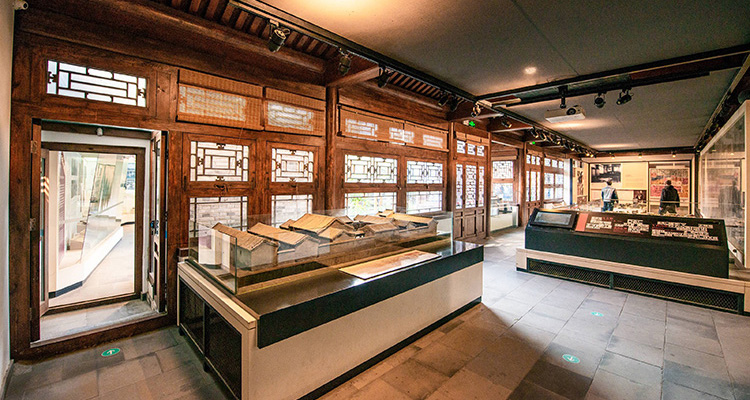Shijia Hutong Museum: Beijing Alleys & Cultural Heritage
Tucked away in a gray-brick alley of Beijing’s Dongcheng District lies a modest yet story-filled museum—Shijia Hutong Museum. There’s no grand gate or bustling crowd, just the shade of old persimmon trees over gray-brick houses, birdcages hanging along small corridors, instantly transporting you to the vibrant, everyday life of old Beijing. As Beijing’s first hutong museum, it tells the tale of “one alley, half of China” in its own unique way.
1. Why You Should Make a Special Visit
Imagine standing in an alley over 700 years old, walking on bluestone paths that date back to the Yuan Dynasty, and hearing the echoes of history—it’s a one-of-a-kind experience that Shijia Hutong offers.
The museum occupies the former garden of Ling Shuhua, one of the three most famous female scholars of the Republic era. In the 1920s and 1930s, this courtyard housed the renowned cultural salon “The Big Study of the Young Ladies”, welcoming luminaries like Qi Baishi and Rabindranath Tagore. Today, meticulously restored, the courtyard allows visitors to step into history and feel the presence of those cultural icons.
Surprisingly, this small museum carries deep historical weight. No. 59 Shijia Hutong once housed the Qing Dynasty’s American Study Office, responsible for sending students to the United States—what later became the predecessor of Tsinghua School. Here, you not only sense old Beijing life but also touch the pulse of modern Chinese education.

2. What You’ll See
Spanning over 1,000 square meters, the museum’s two-courtyard layout features eight themed exhibition halls, like a slowly unfolding historical scroll.
Highlights Not to Miss:
- 130 Miniature Courtyards: Intricately crafted models vividly recreate original hutong layouts, offering an instant understanding of hutong architecture.
- Hutong Sounds Exhibit: Touchscreens play over 70 disappearing or vanished sounds—from “Zhènjīng Guī” to “Hǔ Chēngzi,” street vendors’ calls, and bicycle bells—creating an authentic soundscape of old Beijing life.
- Era Memory Exhibit: Donated by local residents, these objects faithfully recreate Beijing family life in the 1950s–60s, each item carrying stories and warmth of the past.
- Celebrity Stories: Former residents include anti-Qing hero Shi Kefa, Republic-era scholar Zhang Shizhao, and China’s first Minister of Water Resources Fu Zuoyi. Their tales reveal why this alley is considered “half of China’s living history.”

3. How to Explore Efficiently
Recommended Route:
Start from the Shijia History Hall and follow the exhibition sequence, ending at the Hutong Sounds Exhibit. Don’t miss the outdoor courtyards—they’re enchanting in every season: spring blossoms, summer shade from persimmon trees, autumn leaves, and winter snow.
Time Planning:
- Quick Visit: About 1 hour to see main exhibits.
- In-Depth Visit: 2 hours for leisurely listening to hutong sounds, examining miniature courtyards, and enjoying the peaceful ambiance.
Helpful Tips:
- Admission is free, and individual visits need no reservation.
- Group visits require advance phone booking (Tue–Fri, 9:30–16:30).
- Flat courtyard surfaces make strolling easy.
- Please respect the space: do not touch exhibits or eat inside galleries.

4. Getting There & Nearby Attractions
Location: 24 Shijia Hutong, Dongcheng District, Beijing. The quiet alley itself feels like a mini adventure.
Public Transport (Recommended):
- Subway: Line 5 provides convenient access.
- Bus: Multiple routes reach nearby Dengshikou area.
Driving:
Strongly discouraged; no parking in the hutong, and surrounding parking is extremely limited.
Nearby Exploration:
After visiting, stroll around Shijia Hutong and nearby alleys to experience the textures and culture of old Beijing. Nearby hutongs like Lishi Hutong and Yanle Hutong are also charming.

5. Tickets & Opening Hours
Good News: Free Admission!
Enjoy the space freely, feeling the weight of history and warmth of everyday life.
Opening Hours:
- Tue–Sun: 9:30–16:30 (last entry 16:20)
- Mon: Closed
- Holidays may adjust hours (e.g., May 1–4, 2025 open; May 5 closed).
Capacity Limits:
If visitor numbers exceed 500, the museum may enforce entry limits.

Shijia Hutong Museum is like a gentle elder, quietly seated in a busy Beijing corner, waiting for visitors willing to slow down. Here, history isn’t dry textbook text—it’s tangible, audible, and vivid. Whether you’re a history lover or simply seeking a peaceful urban retreat, this museum promises an unforgettable experience.


